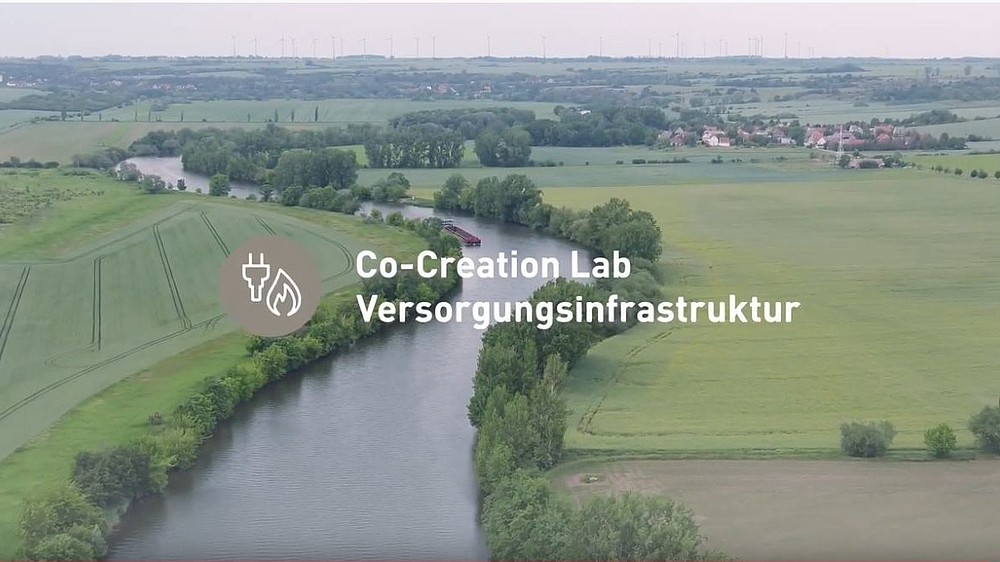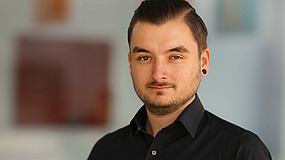Sustainably generated energy of tomorrow? With the "Saale to Heat" project, the HSZG is researching this as part of the Co-Creation Lab Supply Infrastructure.

How can the energy of tomorrow be generated sustainably? Can electricity from wind and solar energy be the driving factor? The Zittau/Görlitz University of Applied Sciences is investigating precisely these questions as part of the Supply Infrastructure Co-Creation Lab and is working together with EVH GmbH in Halle on the "Saale to Heat" project.
"The aim is for an innovative combined heat and power plant to provide sustainable, ecological district heating," explains Jens Maiwald, project employee at the HSZG.
A transfer film has now been made about the project, which is funded by the Saxony5 joint project, in which the project participants explain what is behind the "Saale to Heat" idea.
The English version can be found here.
Dipl.-Wirtsch.-Ing. (FH) Jens Maiwald explains the project in detail:
In the Co-Creation Lab for Supply Infrastructure 'CELSIUZ' at the Zittau/Görlitz University of Applied Sciences, transfer from science to practice is actively pursued. This is also the case in the "Saale to Heat" project. The university's Institute of Process Engineering, Process Automation and Measurement Technology (IPM for short) investigated how the energy of tomorrow can be provided sustainably. Together with EVH GmbH at the Halle Trotha site, a feasibility study was carried out to find a solution for the provision of sustainable, ecological district heating using an innovative combined heat and power plant.
The term cogeneration refers to the simultaneous generation of mechanical energy, which is usually converted directly into electricity, and the resulting process heat, which can be fed into a district heating network, for example.
As part of the feasibility study, the implementation of a combined heat and power system consisting of a large heat pump and a combined heat and power plant was investigated. The special feature of this system is the use of the environmental heat of the Saale water as an alternative energy source. The aim is to cover the basic summer load of 25 - 30 MWth required in the district heating network by providing heat from the heat pump and the combined heat and power plant.
The share of district heating in the total heat demand of the city of Halle (Saale) is approx. 60 % and thus offers a largeCO2 reduction potential in the heating sector. The large heat pump to be implemented can be powered purely by electricity from wind and solar energy and uses the river water from the Saale to produce heating water for the district heating at a temperature of 90 °C. This cools the Saale water by around 5 °C, which has a positive effect on the environment, especially in summer.
In addition to feeding electrical energy into the public grid, the combined heat and power plant ensures that the heat pump is supplied with electricity during periods of darkness, i.e. when there is little wind and sun. In addition, the heat extracted from the combined heat and power plant is fed into the district heating network.
The feasibility study provided evidence of the technical feasibility and eligibility for funding in accordance with the Combined Heat and Power Tendering Ordinance (KWKAusV) for an innovative combined heat and power system. Based on the load profile analysis of the district heating network, the analysis of the Saale water temperature and the determination of the summer base load, basic load cases were defined.
The investigations for the planned concept showed that the type of interconnection is technically feasible and that the efficiency of the overall district heating system is increased while CO2 emissions are reduced.
The technical availability and maturity of the individual components were also considered. The findings from the analyses and simulations carried out, the market availability of the individual components and applicable funding guidelines were used to create an overall concept in the field of innovative combined heat and power generation that was eligible for funding. The implementation of the favored system concept has already been handed over to the funding body and is currently in the planning phase. The developed concept will contribute to the reduction of CO2 emissions in the district heating sector of the city of Halle in the future.


